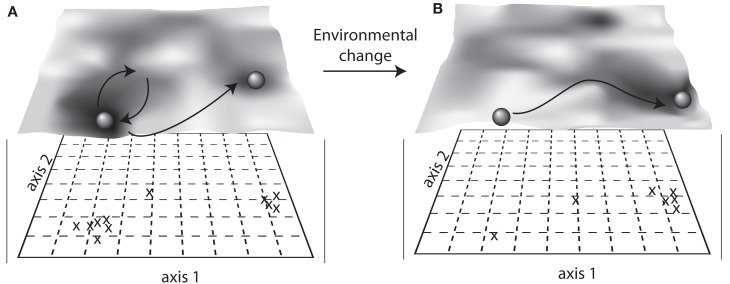Figure 2.
Alternative equilibria, also called alternative stable states, visualized with a stability landscape. Here, changes in community composition are assessed using axis scores from an ordination (e.g., principal coordinates analysis (PCoA) of Bray–Curtis similarities) before (A) and after (B) environmental change. The overlay “terrain” of the landscape shows the different stable states as basins, and the community is represented as a ball that is either maintained in its original basin or displaced to a new basin after a disturbance. Community resilience is represented by the slope of the basin walls, showing a rate of return to the original stable state.

